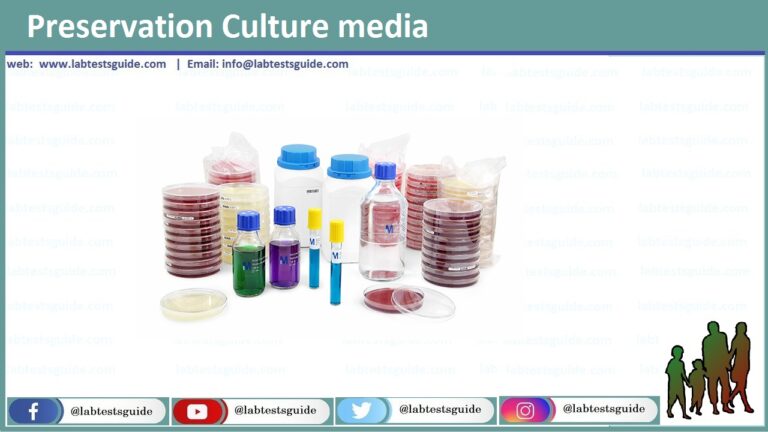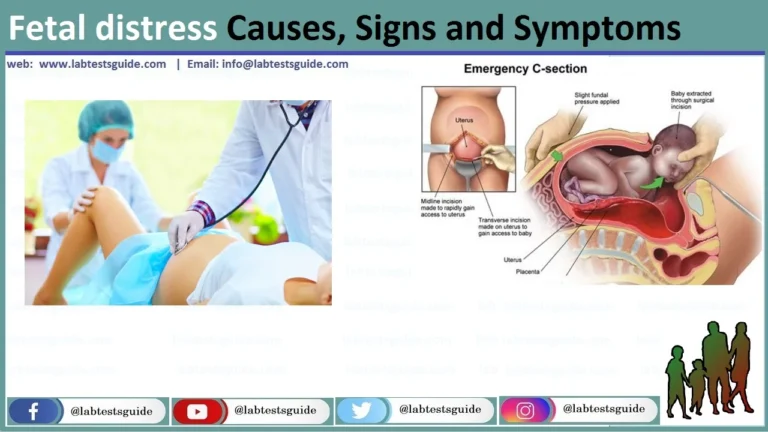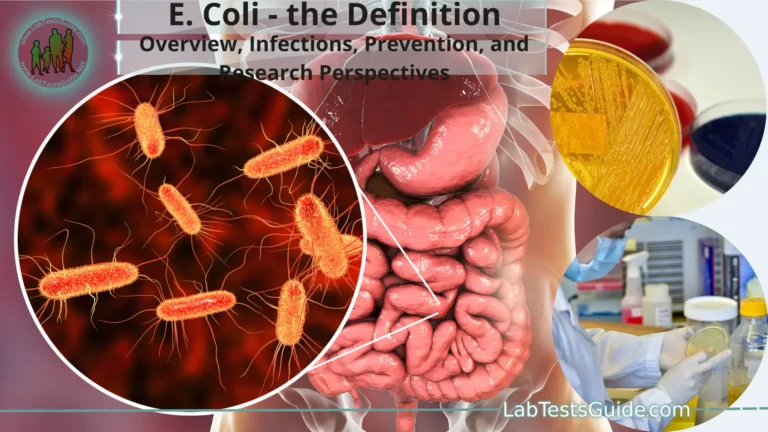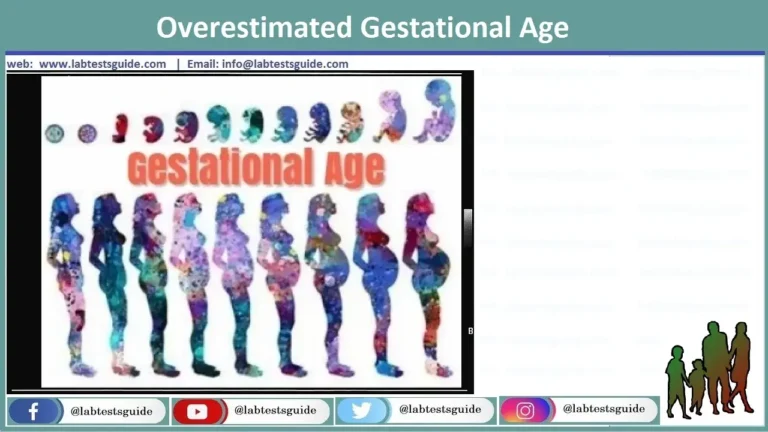The corpus luteum is a temporary endocrine structure that forms in the ovary after the release of an egg during ovulation. It plays a crucial role in the reproductive system of mammals, including humans. The corpus luteum develops from the remains of the ovarian follicle that contained the mature egg.

Definition of Corpus Luteum.
The corpus luteum (plural: corpora lutea) is a temporary endocrine structure that forms in the ovary after ovulation has taken place. It is derived from the remnants of the ovarian follicle that released a mature egg during the menstrual cycle. The term “corpus luteum” translates to “yellow body” in Latin, which reflects its characteristic yellowish appearance.
The corpus luteum is a glandular structure that plays a crucial role in the female reproductive system by producing hormones, primarily progesterone, and to a lesser extent, estrogen. These hormones are essential for preparing and maintaining the uterine lining (endometrium) for possible pregnancy and supporting early pregnancy.
Ovulation and Corpus Luteum Formation:
- Ovulation: Ovulation is the process by which a mature egg (ovum) is released from an ovarian follicle in the ovary and is made available for potential fertilization. It occurs approximately midway through the menstrual cycle, around day 14 in a 28-day cycle, but can vary based on the length of the cycle.
Steps of Ovulation:
- Follicular Development: During the first half of the menstrual cycle, several ovarian follicles begin to develop under the influence of hormones, particularly follicle-stimulating hormone (FSH). Each follicle contains an immature egg.
- Dominant Follicle Selection: As the cycle progresses, one follicle becomes the dominant follicle. This follicle continues to grow and develop, while the others undergo atresia (degeneration).
- Luteinizing Hormone (LH) Surge: As the dominant follicle matures, it produces increasing amounts of estrogen. This rise in estrogen triggers a surge of luteinizing hormone (LH) from the pituitary gland.
- Follicle Rupture: The LH surge causes the mature follicle to rupture and release the mature egg from the ovary. This is ovulation. The egg is released into the peritoneal cavity near the fallopian tube.
Corpus Luteum Formation:
- After the egg is released during ovulation, the remaining structure of the ovarian follicle undergoes changes to form the corpus luteum.
Steps of Corpus Luteum Formation:
- Ruptured Follicle Transformation: Following ovulation, the ruptured follicle collapses and the remaining granulosa and theca cells undergo a transformation.
- Formation of Corpus Luteum: The transformed cells reorganize to form a yellowish, glandular structure called the corpus luteum (Latin for “yellow body”). This transformation is initiated by the LH surge that triggered ovulation.
- Hormone Production: The corpus luteum becomes highly vascularized and starts producing hormones, primarily progesterone. It also produces some estrogen. These hormones are crucial for preparing and maintaining the uterine lining (endometrium) for potential pregnancy.
- Progesterone Dominance: The corpus luteum’s main function is to produce progesterone, which inhibits the release of further eggs by suppressing follicle-stimulating hormone (FSH) and luteinizing hormone (LH) production. This helps create a favorable environment for embryo implantation.
Outcome:
- If fertilization and implantation occur, the developing embryo produces human chorionic gonadotropin (hCG), which signals the corpus luteum to persist and continue producing hormones until the placenta takes over. If fertilization does not occur, the corpus luteum regresses, hormone production decreases, and the menstrual cycle begins anew.
Hormones Produced by the Corpus Luteum:
Progesterone:
- Progesterone is often referred to as the “pregnancy hormone” due to its vital role in creating a favorable uterine environment for a potential embryo.
Functions:
- Maintains and thickens the uterine lining (endometrium) to support embryo implantation.
- Inhibits the release of further eggs (ovulation) by suppressing follicle-stimulating hormone (FSH) and luteinizing hormone (LH) secretion from the pituitary gland.
- Helps prevent contractions of the uterine muscles, preventing premature labor.
- In the early stages of pregnancy, the corpus luteum produces progesterone until the placenta develops and takes over hormone production.
Estrogen:
- While the corpus luteum primarily produces progesterone, it also produces a smaller amount of estrogen.
Functions:
- Supports the growth and maintenance of the uterine lining.
- Stimulates cervical mucus production, which can facilitate sperm transport through the cervix and into the fallopian tubes.
- Works in conjunction with progesterone to regulate the menstrual cycle.
Importance in Menstrual Cycle Regulation:
Uterine Lining Maintenance:
- After ovulation, the corpus luteum produces progesterone, which helps maintain the thickened uterine lining (endometrium) that developed during the first half of the menstrual cycle.
- Progesterone ensures that the endometrium remains receptive to a fertilized egg for potential implantation.
- Without sufficient progesterone, the endometrium might not be adequately prepared, leading to difficulties in embryo implantation and early pregnancy maintenance.
Luteal Phase:
- The period of the menstrual cycle following ovulation is called the luteal phase, and it is characterized by the presence of the corpus luteum.
- The corpus luteum produces progesterone, which dominates this phase. Progesterone inhibits further ovulation and prepares the body for a potential pregnancy.
Suppression of Further Ovulation:
- High levels of progesterone from the corpus luteum suppress the secretion of follicle-stimulating hormone (FSH) and luteinizing hormone (LH) from the pituitary gland.
- This suppression prevents the development of new ovarian follicles and the release of additional eggs during the current menstrual cycle.
- In essence, the corpus luteum helps maintain the “quieter” phase of the menstrual cycle, allowing the body to focus on the possibility of pregnancy.
Establishment of Pregnancy:
- If fertilization occurs and a viable embryo implants into the prepared uterine lining, the embryo releases human chorionic gonadotropin (hCG).
- This hormone signals the corpus luteum to continue producing progesterone, providing hormonal support for the developing embryo until the placenta takes over hormone production.
Corpus Luteum Regression and Menstruation:
If fertilization and implantation do not occur, the corpus luteum gradually regresses.
As the corpus luteum regresses, progesterone production decreases, leading to a drop in hormone levels.
This drop in hormones triggers the shedding of the uterine lining, resulting in menstruation and the initiation of a new menstrual cycle.
Corpus Luteum Regression:
Hormonal Changes:
- Once the corpus luteum is formed, it begins producing hormones, primarily progesterone, which is important for maintaining the uterine lining in preparation for pregnancy.
- If fertilization and implantation of an embryo occur, the developing embryo releases human chorionic gonadotropin (hCG). This hormone signals the corpus luteum to persist and continue producing hormones to support the early stages of pregnancy.
If Fertilization Does Not Occur:
- If fertilization does not occur and an embryo does not implant in the uterus, the corpus luteum’s function is not sustained by hCG.
- Without the ongoing signal from hCG, the corpus luteum undergoes a gradual process of regression.
Decreased Hormone Production:
- As the corpus luteum regresses, its size diminishes, and its hormone production decreases.
- Progesterone levels decline, leading to a drop in the hormonal support for the uterine lining.
Onset of Menstruation:
- The decrease in progesterone levels triggers a series of events that lead to the shedding of the uterine lining. This shedding is known as menstruation.
- Menstruation marks the beginning of a new menstrual cycle, characterized by the development of a new ovarian follicle and the potential for ovulation to occur again.
Formation of New Corpus Luteum (if Ovulation Occurs):
- As a new ovarian follicle develops and matures, it may release an egg during ovulation.
- If this egg is released and not fertilized, the remaining follicle undergoes transformation to form a new corpus luteum, restarting the cycle.
Cycle Continuation:
- The process of corpus luteum formation, hormone production, potential pregnancy, and subsequent regression is cyclical and repeats in each menstrual cycle.
- Each corpus luteum has a finite lifespan, and its regression ensures that the body cycles through the phases of fertility, preparation for pregnancy, and menstruation.
Menstruation and Menstrual Cycle Restart:
Hormonal Changes:
- As the corpus luteum regresses due to the absence of fertilization and hCG signaling, progesterone levels decrease.
- The drop in progesterone and estrogen levels removes the hormonal support that maintained the uterine lining.
Uterine Lining Breakdown:
- Without the hormonal support, the blood vessels that supply the endometrium constrict, leading to a decrease in blood flow to the uterine lining.
- The lack of blood flow causes the outer layer of the endometrium to break down and detach from the uterine wall.
Menstrual Bleeding:
- The broken-down endometrial tissue, along with a mixture of blood and mucus, is expelled from the uterus through the cervix and vagina.
- This process results in the characteristic bleeding of menstruation.
Menstrual Cycle Restart:
- The expulsion of the uterine lining marks the end of one menstrual cycle and the beginning of a new one.
- The drop in hormone levels during menstruation triggers the hypothalamus-pituitary-ovary axis to initiate the development of a new ovarian follicle.
Follicular Development:
- The hypothalamus releases gonadotropin-releasing hormone (GnRH), which stimulates the pituitary gland to release follicle-stimulating hormone (FSH) and luteinizing hormone (LH).
- These hormones stimulate the development of multiple ovarian follicles, each containing an immature egg.
Selection of Dominant Follicle:
- While multiple follicles start to develop, only one usually becomes the dominant follicle.
- The dominant follicle continues to mature and release estrogen.
Ovulation and Corpus Luteum Formation:
- As the dominant follicle matures, it produces increasing amounts of estrogen.
- This rise in estrogen levels triggers a surge of luteinizing hormone (LH), leading to ovulation.
- The ruptured follicle transforms into the corpus luteum, which produces progesterone.
Potential Pregnancy and the Cycle Continues:
- If fertilization occurs, the embryo releases hCG, which signals the corpus luteum to continue producing progesterone and supports early pregnancy.
- If fertilization does not occur, the corpus luteum regresses, progesterone levels drop, and the menstrual cycle begins anew.
Significance in Fertility and Reproduction:
Here are some key points highlighting its significance.
- Ovulation and Egg Release: The corpus luteum is formed after ovulation, which is the release of a mature egg from the ovary.
Ovulation is essential for fertilization to occur, as it releases an egg that can be fertilized by sperm. - Hormone Production: The corpus luteum produces progesterone and estrogen, which are critical for various reproductive processes:
Progesterone maintains the uterine lining (endometrium) and prepares it for embryo implantation.
Estrogen supports the growth and maintenance of the endometrium. - Uterine Environment Preparation: Progesterone ensures the endometrium is receptive to embryo implantation, providing an optimal environment for a fertilized egg to attach to the uterine wall.
- Hormonal Regulation: The corpus luteum helps regulate the menstrual cycle through its hormone production, which influences the timing of ovulation and menstruation.
- Pregnancy Support: In the early stages of pregnancy, the corpus luteum produces progesterone until the placenta takes over hormone production.
Progesterone from the corpus luteum supports the developing embryo by preventing uterine contractions and maintaining the uterine environment. - Hormonal Communication: The corpus luteum’s regression in the absence of pregnancy is a signal to the body that pregnancy has not occurred in that cycle. This triggers the initiation of a new menstrual cycle.
- Infertility and Fertility Treatments: Problems with corpus luteum function, such as insufficient progesterone production, can contribute to infertility or difficulty maintaining a pregnancy.
Fertility treatments often involve monitoring and supporting corpus luteum function to enhance the chances of successful conception and pregnancy. - Menstrual Cycle Regulation: The corpus luteum’s influence on hormonal balance ensures proper menstrual cycle regulation, including ovulation, uterine lining maintenance, and menstruation.
- Hormonal Feedback Loop: The interaction between the hypothalamus, pituitary gland, ovaries, and the corpus luteum creates a complex hormonal feedback loop that governs the entire menstrual cycle.
Clinical Considerations and Health Implications:
Here are some notable points to consider:
Corpus Luteum Cysts:
- Corpus luteum cysts can form when the corpus luteum does not regress as expected and continues to fill with fluid. These cysts are usually benign and resolve on their own within a few menstrual cycles.
- However, larger or persistent corpus luteum cysts can cause pain and discomfort and may require medical intervention.
Luteal Phase Defect:
- A luteal phase defect occurs when the corpus luteum does not produce sufficient progesterone to adequately support the uterine lining.
- This can lead to difficulty in embryo implantation or maintaining early pregnancy.
Infertility and Hormone Imbalance:
- Issues with corpus luteum function, such as insufficient hormone production, can contribute to infertility or difficulties in achieving and maintaining pregnancy.
Ectopic Pregnancy:
- In rare cases, an embryo can implant outside the uterus, often within a fallopian tube. This is known as an ectopic pregnancy.
- The corpus luteum can still produce hormones in an ectopic pregnancy, leading to positive pregnancy tests, even though the pregnancy is not viable.
Fertility Treatments:
- Assisted reproductive technologies (ART), such as in vitro fertilization (IVF), may involve monitoring and supporting corpus luteum function to enhance the chances of successful implantation.
Menstrual Irregularities:
- Disorders affecting the corpus luteum’s function can lead to irregular menstrual cycles, heavy bleeding, or missed periods.
Hormone Replacement Therapy:
- Hormone replacement therapy (HRT) may involve supplementing with progesterone and estrogen, similar to the roles played by the corpus luteum, to address menopausal symptoms.
Diagnostic Imaging and Monitoring:
- Ultrasound and other imaging techniques can help monitor the size and health of the corpus luteum and detect any abnormalities.
Fertility Awareness and Tracking:
- Monitoring the presence and activity of the corpus luteum can be part of fertility awareness methods used by women to identify fertile days and plan or avoid pregnancy.
PCOS and Hormonal Imbalances:
- Conditions like polycystic ovary syndrome (PCOS) can disrupt the hormonal balance involved in the formation and function of the corpus luteum, leading to menstrual irregularities and fertility issues.
Research and Medical Interventions:
- Understanding Corpus Luteum Function: Researchers study the molecular and hormonal mechanisms that regulate corpus luteum formation, function, and regression to gain insights into fertility and menstrual cycle regulation.
- Infertility Treatment: Medical interventions aim to address corpus luteum dysfunction, luteal phase defects, and other factors contributing to infertility. Fertility treatments often involve hormone therapy to support corpus luteum function, enhance uterine lining preparation, and promote successful embryo implantation.
- Assisted Reproductive Technologies (ART): In vitro fertilization (IVF) and related techniques require careful monitoring and manipulation of the corpus luteum to optimize pregnancy success rates.
- Hormone Replacement Therapy (HRT): Hormone replacement therapy, including progesterone and estrogen supplementation, is used to address menopausal symptoms and hormone imbalances.
- Corpus Luteum Preservation: In some fertility preservation techniques, efforts are made to preserve and bank ovarian tissue containing potential corpus luteum-forming cells.
- Imaging and Monitoring: Medical imaging, such as ultrasound, is used to monitor the size, health, and development of the corpus luteum. Abnormalities can be detected and managed accordingly.
- Ovarian Stimulation Protocols: In controlled ovarian stimulation for assisted reproduction, protocols are designed to stimulate multiple ovarian follicles, potentially leading to the development of multiple corpus lutea.
- Corpus Luteum Supplementation: Hormonal supplementation with progesterone, hCG, or other related compounds can support corpus luteum function in cases of deficiency or risk.
- Research in Gynecology and Obstetrics: Research focuses on optimizing pregnancy outcomes, reducing risks of miscarriage, and managing conditions affecting corpus luteum function.
- Genetic and Hormonal Factors: Genetic studies explore how variations in genes related to corpus luteum function may impact fertility and reproductive health.
- Ectopic Pregnancy Diagnosis: Research and medical imaging techniques help detect and diagnose ectopic pregnancies early to prevent complications related to corpus luteum hormone production.
- Hormone Profiling and Menstrual Cycle Tracking: Research aims to understand the dynamics of hormonal changes throughout the menstrual cycle and how they correlate with corpus luteum activity.
FAQs:
What is the corpus luteum?
The corpus luteum is a temporary endocrine structure formed in the ovary after ovulation. It produces hormones, primarily progesterone, and estrogen, which are essential for preparing the uterus for potential pregnancy.
What is the role of the corpus luteum in the menstrual cycle?
The corpus luteum’s main role is to produce hormones that maintain the uterine lining for embryo implantation. It also suppresses further ovulation and regulates the menstrual cycle.
How does the corpus luteum support pregnancy?
If fertilization occurs, the developing embryo produces hCG, which signals the corpus luteum to continue producing hormones that support the early stages of pregnancy until the placenta takes over hormone production.
What happens if the corpus luteum regresses?
If fertilization doesn’t occur, the corpus luteum regresses, leading to decreased hormone production. This drop in hormones triggers the shedding of the uterine lining and the onset of menstruation, marking the start of a new menstrual cycle.
Can issues with the corpus luteum lead to infertility?
Yes, problems with corpus luteum function can contribute to infertility. Insufficient hormone production can make it challenging for the uterine lining to support embryo implantation and early pregnancy.
How are corpus luteum cysts different from regular cysts?
Corpus luteum cysts are formed when the corpus luteum does not regress as expected. They are typically filled with fluid and usually resolve on their own within a few cycles. Other ovarian cysts can be functional (follicular) or non-functional (dermoid, endometriotic).
Can hormone replacement therapy (HRT) involve the use of progesterone from the corpus luteum?
Yes, in a way. HRT often includes the supplementation of hormones like progesterone and estrogen, similar to the hormones produced by the corpus luteum, to manage menopausal symptoms and hormonal imbalances.
Can monitoring the corpus luteum help with family planning?
Yes, monitoring the corpus luteum’s activity can be part of fertility awareness methods used by women to identify fertile days for conception or to avoid pregnancy.
Can the corpus luteum play a role in pregnancy complications?
Yes, complications involving the corpus luteum can impact fertility, cause menstrual irregularities, and contribute to early pregnancy loss.
Are there medical treatments to address issues with the corpus luteum?
Yes, medical interventions can include hormone therapy, assisted reproductive technologies, and treatments to address luteal phase defects and other conditions affecting the corpus luteum.
Conclusion:
In conclusion, the corpus luteum is a dynamic and vital component of the female reproductive system. Formed after ovulation, this temporary glandular structure produces progesterone and estrogen, orchestrating the preparation and maintenance of the uterine lining for possible pregnancy. Its role in suppressing further ovulation, regulating the menstrual cycle, and providing hormonal support during early pregnancy underscores its significance in fertility and reproductive health. While its regression triggers menstruation and marks the beginning of a new cycle, its proper function is pivotal for successful conception and healthy pregnancies. Ongoing research and medical interventions continue to enhance our understanding of the corpus luteum’s intricate functions, enabling tailored treatments and improved outcomes for women’s reproductive well-being.
Possible References Used






